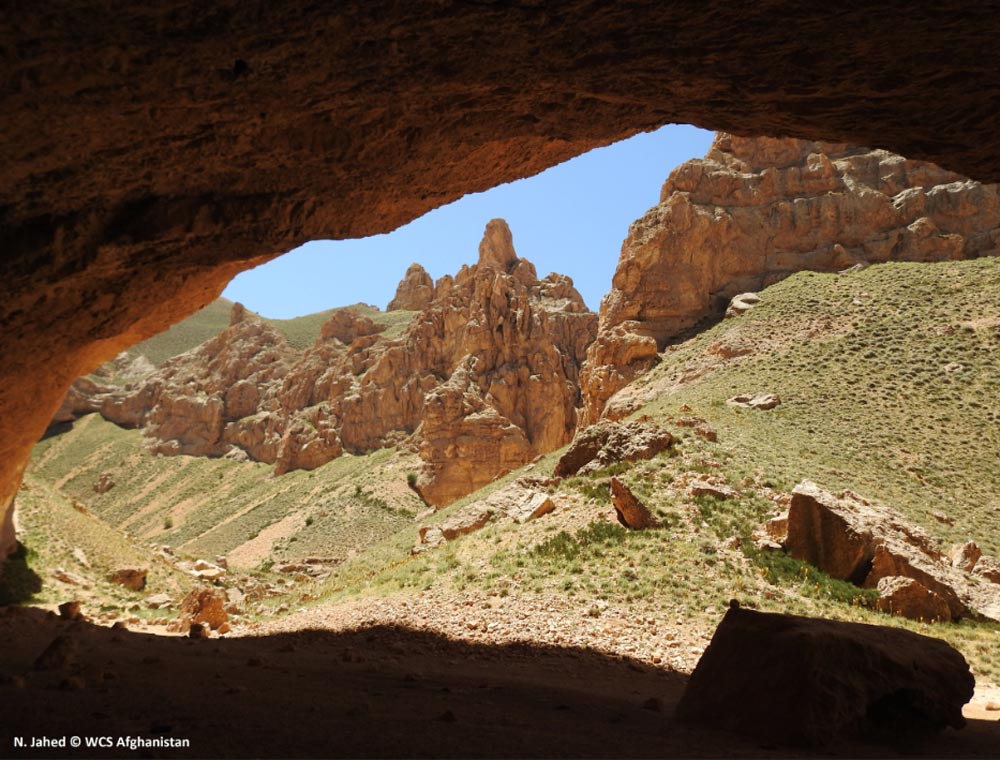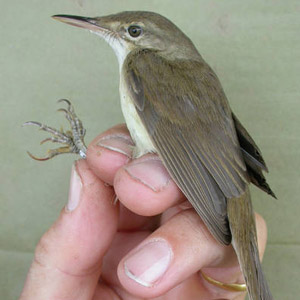Magazine | Voyages
Des photos de la nouvelle zone protégée du plateau de Bamiyan, le domaine de la Niverolle d’Afghanistan

Vue de la zone protégée du plateau de Bamiyan (Afghanistan).
Photographie : N. Jahed / WCS Afghanistan
Introduction
L’Afghanistan est un pays montagneux d’Asie centrale. Son plus haut sommet est le mont Nowshak (7 485 mètres d’altitude), situé dans le massif de Hindou Kouch, dans le prolongement de l’Himalaya. Depuis le début de XXe siècle, il est le théâtre de nombreux conflits armés : guerre anglo-afghane en 1919, résistance à l’intervention des troupes soviétiques entre 1979 et 1989, puis intervention internationale contre le gouvernement islamiste des Talibans à partir de 2001. Les troupes de l’OTAN (Organisation du Traité de l’Atlantique Nord) se sont retirées en 2014, mais la situation politique reste très instable et les attentats constants, particulièrement dans les zones restées sous le contrôle des Talibans. La création en novembre 2019 de la zone protégée du plateau de Bamiyan ou Bâmiyân (« Bamiyan Plateau Protected Area »), située dans la chaîne de l’Hindu Kush, est donc inespérée et constitue un signe d’espoir, d’autant plus que le nom de Bamiyan est plutôt associé aux destructions en mars 2001 de trois grandes statues de Bouddhas. Ce secteur protégé, montagneux et sauvage, est d’un grand intérêt écologique, culturel, historique et esthétique, et avec une superficie de 4 200 kilomètres carrés, c’est la deuxième plus vaste du pays après le parc national de Wakhan.
Plusieurs inventaires faunistiques et floristiques menés sur ce plateau entre 2006 et 2018, basés sur des pièges photographiques et des observations, ont révélé la présence de plusieurs espèces rares et confirmé la nécessité d’une protection. Parmi les mammifères remarquables recensés, citons la Panthère de Perse (Panthera pardus saxicolor), l’Ibex de Sibérie (Capra ibex sibirica) et l’Urial (Ovis vignei), tandis le Blaireau du Caucase ou d’Asie sud-ouest (Meles canescens) a été trouvé pour la première fois dans le pays. D’un point de vue ornithologique, la zone de protection du plateau de Bamiyan est également importante, avec notamment de belles populations de vautours, la présence de la Niverolle d’Afghanistan (Pyrgilauda theresae), le seul endémique du pays, et la découverte de la nidification de la Nyctale de Tengmalm (Aegolius funereus).
La Wildlife Conservation Society (WCS), qui a soutenu la création de cette zone protégée en mobilisant des fonds importants, en fournissant une expertise technique pour collecter des données, en mobilisant les communautés locales et les autorités, et en rédigeant le dossier technique qui a été soumis au gouvernement, a publié plusieurs photos de ce secteur reculé et peu connu des naturalistes, et qui le restera sûrement encore tant que la situation sécuritaire ne sera pas stabilisée.
Abstract
Afghanistan is a mountainous country in Central Asia. Its highest peak is the Mount Nowshak (7,485 meters above sea level), located in the Hindu Kush massif, in the extension of the Himalayas. Since the beginning of the 20th century, it has been the scene of numerous armed conflicts: the Anglo-Afghan war in 1919, the resistance to the intervention of Soviet troops between 1979 and 1989, then international intervention against the Islamist government of the Taliban from 2001. The NATO (North Atlantic Treaty Organization) troops withdrew in 2014, but the political situation remains very unstable and attacks are constant, particularly in areas that remain under the control of the Taliban. The creation in November 2019 of the country’s fifth protected area, the « Bamyan Plateau Protected Area », located in the Hindu Kush chain, is therefore unexpected and a sign of hope, especially since the name of Bâmiyân is rather associated with the destruction in March 2001 of three large statues of Buddhas. This new mountainous and wild protected area, is of great ecological, cultural, historical and aesthetic interest, and with an area of 4,200 square kilometers, it is the second largest in the country after Wakhan National Park.
Several fauna and flora inventories that were conducted between 2006 and 2018, based in part on the installation of photographic traps, revealed the presence of several rare species and the need for protection. Among the remarkable mammal species present, let us quote the Persian Panther (Panthera pardus saxicolor), the Siberian Ibex (Capra ibex sibirica) (substantial numbers) and the Urial (Ovis vignei), while the presence of the Caucasian Badger (Meles canescens) has been found for the first time in the country. From an ornithological point of view, the protection zone of the Bamyan plateau is also important, with in particular good populations of vultures, the presence of the Afghan Snowfinch (Pyrgilauda theresae), the only endemic of the country, and the discovery of the Tengmalm’s Owl (Aegolius funereus).
The Wildlife Conservation Society (WCS) association, which formally supported the creation of this protected area by mobilizing significant funds, providing technical expertise to collect data, mobilizing local communities and authorities, and drafting the technical dossier which was submitted to the government, published several photos of this remote and little known area to naturalists, and which will surely remain so until the security situation is stabilized.
Poursuivez la lecture de cet article, en vous abonnant dès maintenant !
Découvrez les Archives d’Ornithomedia.com
Pour seulement 10,00 €TTC/an (ou 6,00 € les 6 mois)
Profitez de plusieurs centaines d’articles en accès illimité et sans aucun engagement.
Compléments
À lire aussi sur le web
Le site web de la Wildlife Conservation Society : www.wcs.org
Ouvrages recommandés
- Birds of Northern India de Richard Grimmett (Auteur), Tim Inskipp (Auteur)
- Birds of Afghanistan (format Kindle) de Wolfgang Daunicht (Auteur)
- Birds of India: Pakistan, Nepal, Bangladesh, Bhutan, Sri Lanka, and the Maldives de Richard Grimmett, Carol Inskipp et Tim Inskipp (2012)
- Handbook of the Birds of India and Pakistan de Salim Ali (Auteur), Ripley S. Dillon (Auteur)
- Field Guide to the Birds of South-East de Craig Robson
Sources
- WCS (2019). New protected area in Afghanistan. Date : 21/11. www.wcs.org
- WCSNewsroom (2019). A Remote Paradise: Afghanistan Establishes the Bamyan Plateau Protected Area. newsroom.wcs.org
- CBD (2019). Afghanistan’s 6th National Report to The United Nation’s Convention on Biological Diversity. www.cbd.int/doc/nr/nr-06/af-nr-06-en.pdf






Aucun commentaire sur ce sujet
Participer à la discussion !